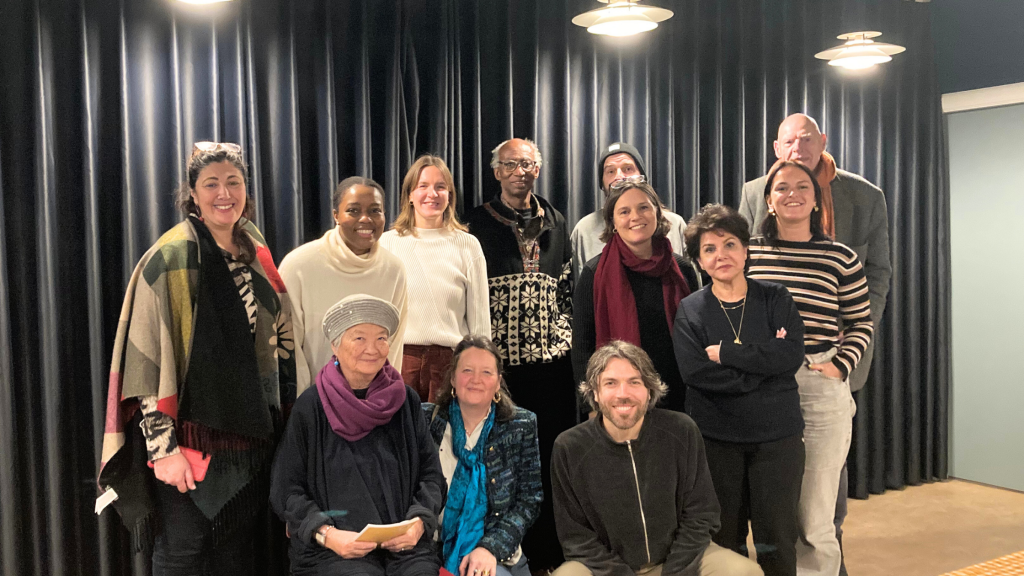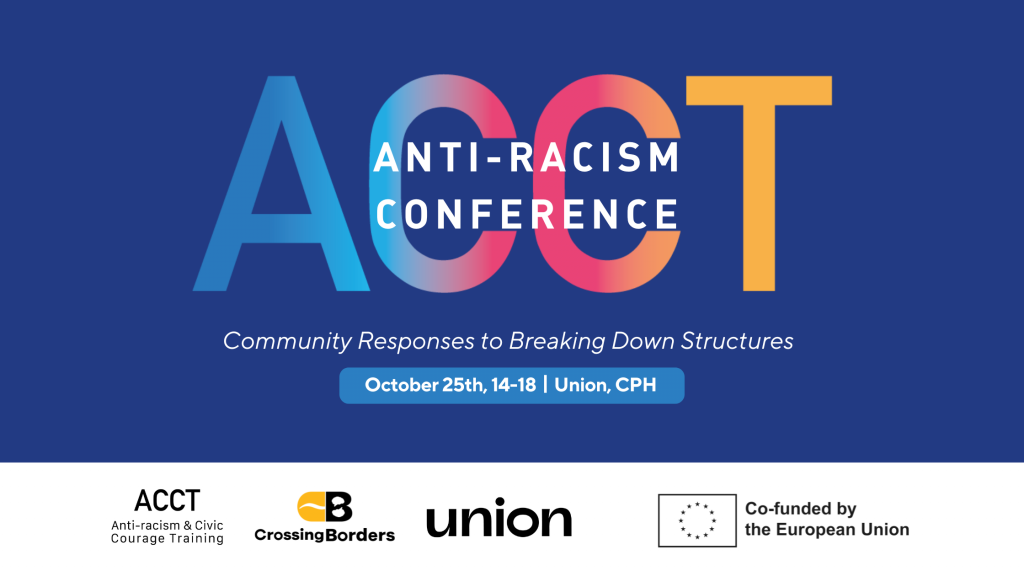Unity in Diversity: The Transformative Power of Dialogue
On Thursday, November 28th, Crossing Borders, the Danish network head of the Anna Lindh Foundation, hosted a panel event titled “Bridging Cultures: Intercultural Dialogue Panel & Anna Lindh Foundation Danish Network Gathering.” Led by Garba Diallo, founder and director of Crossing Borders, the event featured four distinguished panellists discussing the transformative power of dialogue in shaping attitudes and driving social change. The panel included Anna Maria Blicher Skanborg, Project Manager at CKI (Danish Centre for Arts and Interculture); Sarah Arnd Linder, Founder of PiP (Political is Personal); Agob Yacoub, Director of Syrian Doc Days and Finjan; and Morten Kjaerum, Former Director of the Danish Institute for Human Rights. In a room filled with diverse voices, the air hums with stories of resilience, connection and the struggle to find understanding. These are not just anecdotes—they are lifelines in a world increasingly fractured by fear and division. Dialogue, the simple yet profound act of listening and speaking, lies at the heart of these efforts. As Anna put it, “If we don’t have dialogue, we have nothing.” This truth resonates across borders and identities, echoing the lived experiences of Syrians, Danes, Palestinians and Israelis, all gathered to explore the power of connection. In this blog, we delve into their stories—stories that reveal how dialogue can heal, transform and ultimately bridge even the widest divides. The Fragile Thread of Connection Dialogue often feels precarious, especially in times of crisis. Yet, as speaker after speaker emphasised, it is an essential lifeline. “I’ve worked in human rights for over 40 years,” Morten shared, “and dialogue has always been the most powerful tool in my toolbox.” The panellists acknowledged the growing challenges to open communication, but their collective faith in dialogue as a vehicle for change remains unshaken. Agob, who came to Denmark from Syria over a decade ago, reflected on how dialogue became a cornerstone of his integration into Danish society. “When I first arrived, I didn’t speak Danish. I didn’t understand the politics, the culture or the system,” he said. “But once I learned the language, I realised I had a mission—to share the knowledge I had gained and to create connections.” Language, he noted, was not just a tool for understanding but also a means of challenging prejudices and finding common ground. Art as a Universal Language In a world often divided by words, art has emerged as a powerful alternative—a universal language that transcends cultural and linguistic barriers. Agob, who organises Syrian documentary film festivals in Denmark, shared how art can illuminate stories that are otherwise lost in the noise of political discourse. “Through film, we show what’s happening on the ground in Syria. It’s not just about the war—it’s about the people, their resilience, their humanity.” Anna highlighted the transformative power of theatre, particularly in intercultural contexts. She spoke about a project that brought together actors from numerous countries to perform Shakespeare in Denmark. “It was challenging. Some funders said it wasn’t ‘Danish enough,’ but the performance shattered those preconceptions. It created a shared space where people could connect beyond their differences.” Physical theatre workshops also played a significant role in fostering connection. “We start with movement and non-verbal communication,” Anna explained. “By the time words are introduced, participants already see each other differently—as humans first, not as categories.” Listening as an Act of Courage Central to dialogue is the courage to listen. “To truly listen,” one panellist observed, “you have to be willing to be changed by what you hear.” This requires setting aside preconceived notions and engaging with openness and humility. This courage is especially evident in contexts of deep conflict. Sarah, who has roots in both Israel and Denmark, shared her journey of building bridges between Israelis and Palestinians. “After 7th October, I felt fear rising in me—a fear of Palestinians I had never experienced before. But I knew I couldn’t let that fear take hold. I sought out Palestinians here in Denmark to talk to them, to see their humanity and share my own.” Sarah’s story underscores a profound truth: meeting those we fear or misunderstand can dissolve even the most entrenched divisions. “Dialogue is underrated,” she continued. “It’s not just a way to resolve conflict—it’s a way to prevent it.” The Role of Safe Spaces For dialogue to thrive, it needs a safe environment. This point was emphasised repeatedly during the discussion. “Creating controlled, safe spaces for dialogue is crucial,” one speaker noted. “It allows people to confront their fears in a setting where they feel secure.” These spaces are especially vital in intercultural and intergenerational dialogues, where power imbalances and historical grievances often complicate conversations. As Agob put it, “I don’t want to be tolerated—I want to be accepted.” His words reflect a universal desire for dignity, one that safe spaces can help nurture. Anna told the audience about how she designs workshops to foster such environments. “In applied theatre, the space becomes a stage where everyone is equal. It’s not about performance—it’s about connection. After two hours, participants feel like they’ve known each other forever.” Challenging Prejudice and Power Throughout the conversation, participants returned to the theme of power—how it shapes dialogue and how it can perpetuate prejudice. “We all have biases,” one panellist admitted. “But the more we categorise people, the easier it becomes to dehumanise them.” Morten, who has worked extensively in human rights, shared a powerful example: “When I was leading an EU agency, we conducted a groundbreaking survey on LGBTQ+ rights. Before releasing the findings, we invited religious leaders to discuss the results. I told them, ‘We don’t have to agree, but we do have to listen.’ What surprised everyone was how small the list of disagreements actually was.” This approach—agreeing to disagree—offers a model for dialogue in polarised contexts. By focusing on shared values rather than divisions, it’s possible to move beyond entrenched positions and find common ground. The Ripple Effect of Dialogue The impact of dialogue extends far beyond the individuals involved. It creates ripples that influence communities,
Unity in Diversity: The Transformative Power of Dialogue Read More »











